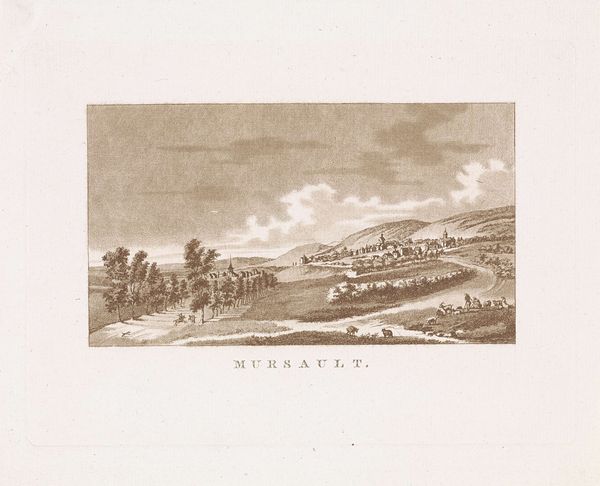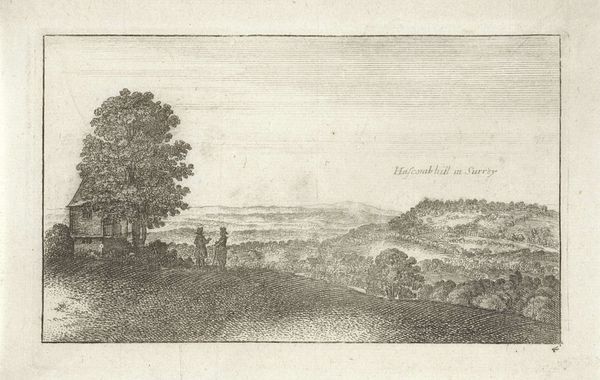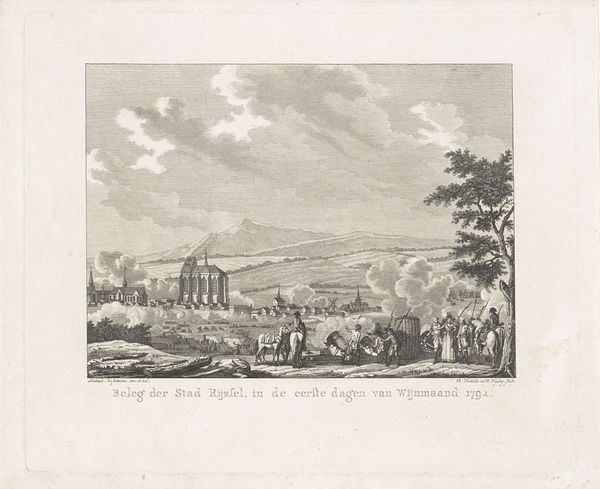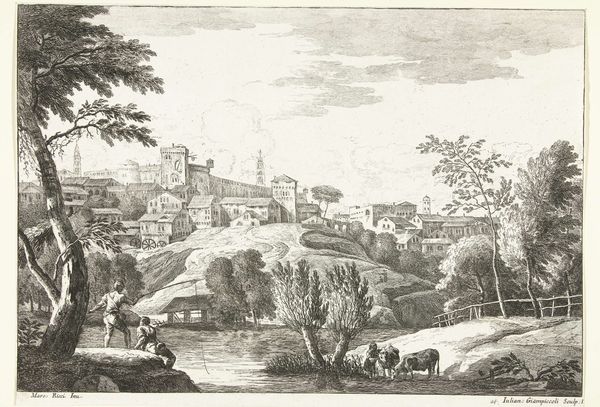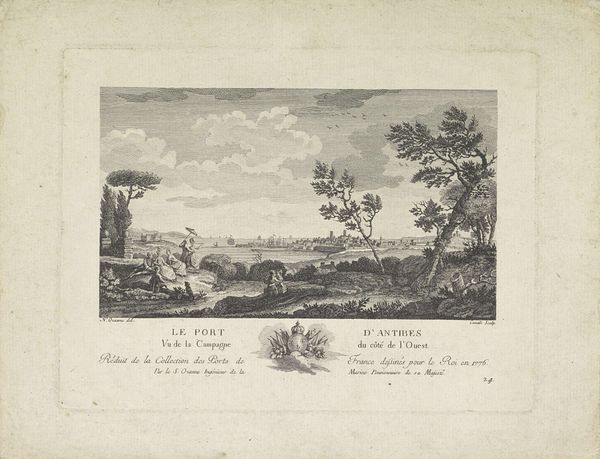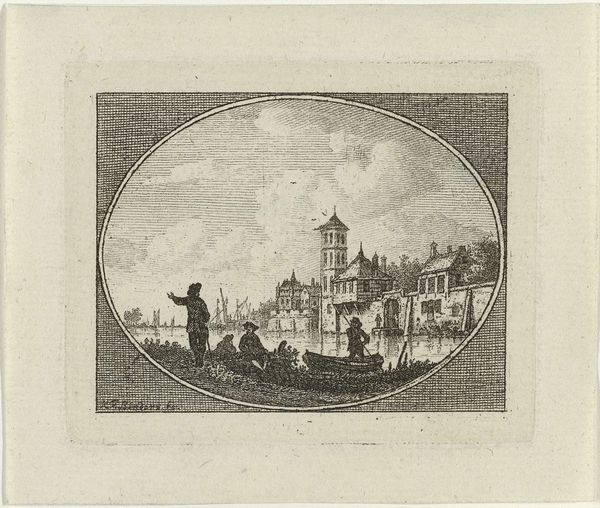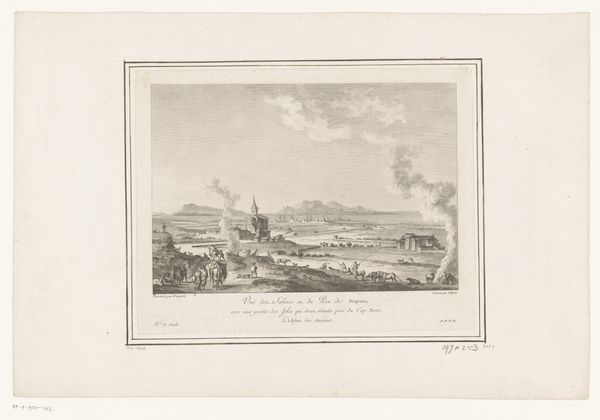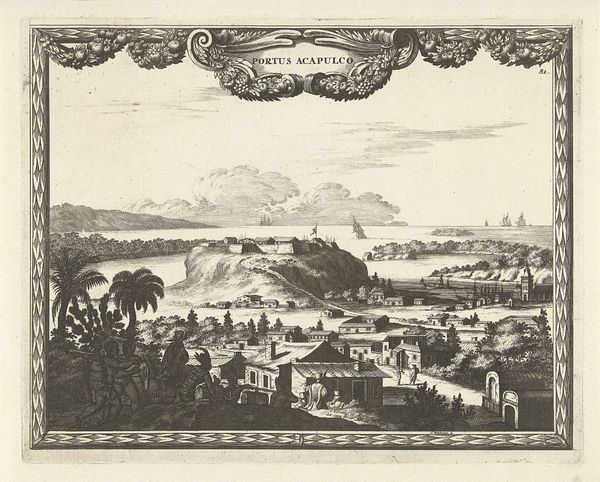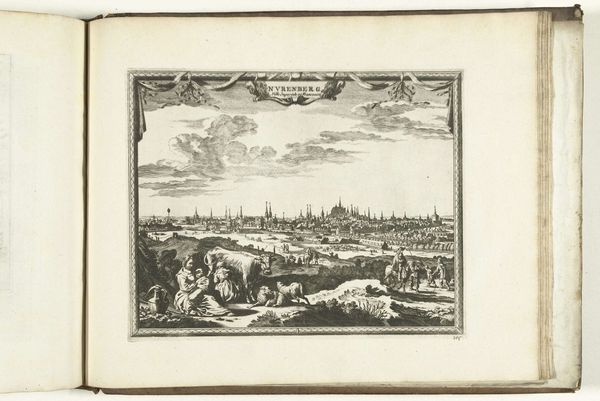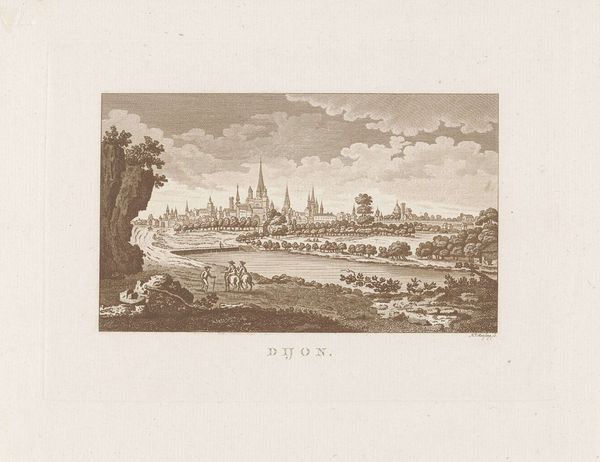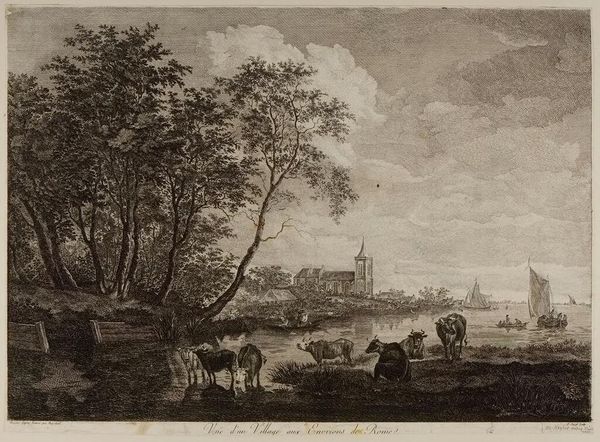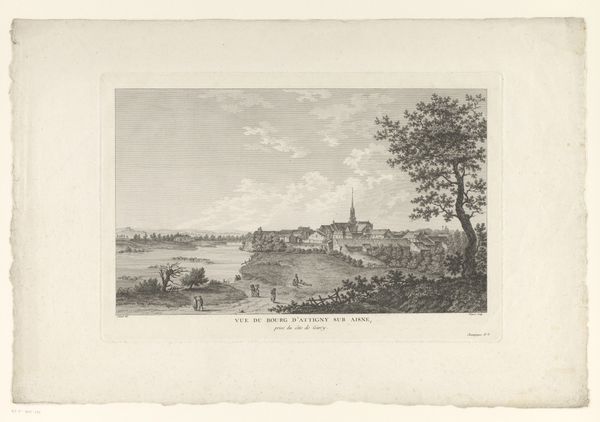
print, engraving
#
neoclacissism
# print
#
landscape
#
genre-painting
#
engraving
Dimensions: height 202 mm, width 235 mm
Copyright: Rijks Museum: Open Domain
Izaak Jansz. de Wit made this print of a wide landscape with a corn harvest sometime in the late eighteenth century. Its grayscale world comes from a copper plate engraving, where the artist would have used tools like burins and scrapers to carve lines into the metal surface, which were then inked and pressed onto paper. The process is painstaking and indirect; the image emerges through careful, repetitive labor. The print celebrates the abundance of the harvest, but also hints at the labor required to obtain it. Look closely, and you’ll notice the many figures bending over the fields, gathering the ripe grain. Their work is essential to the cycle of food production, yet their individual contributions are subsumed into the larger landscape. In a way, this parallels the printmaking process itself, where individual actions of carving and inking contribute to the final image. Consider how this connects to broader issues of labor and consumption in that era. De Wit elevates the mundane and invites us to reflect on the relationship between human effort, the natural world, and the images that represent them.
Comments
No comments
Be the first to comment and join the conversation on the ultimate creative platform.
